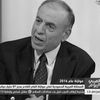"INSIDE THE ARAB REVOLUTION" by Koert Debeuf from Lannoo Campus Publishers, April 2014, in paperback
Unlike most of us, Koert Debeuf is no desk researcher. He is a courageous and committed political blogger, opinion maker and Middle East expert, who travelled extensively in Egypt, Syria, Libya, Tunisia, Jordan, Palestine and Turkey. A representative of the European Liberals and Democrats in the European Parliament (ALDE), Debeuf was physically present at the Arab Spring; in Tahrir Square in Cairo, Taksim Square in Istanbul, Azaz refugee camp in northern Syria. He walked through bombed-out markets and bakeries, and visited the rebels in Aleppo. In September 2011 he moved to Cairo, to observe first-hand the unfolding events. The result of his odyssey is this meticulously detailed account of a period of big historical change in the Middle East.
"Inside the Arab Revolution" is a definitive account of the Arab revolutions, highly informative, passionately written, and full of fact-based anecdotes highlighting, amongst other things, the suffering of Syrian children, inside Syria and in refugee camps. It is no exaggeration to describe the book as a landmark in the literature of the political Tsunami that swept the region. Its impact is all the more extraordinary given that its author is a non-Arab.
The author draws comparisons between the French Revolution 1789 and the Arabic Revolutions of 2011 onwards. The French revolution needed 86 years and 14 constitutions to achieve a stable democracy. The French revolution was a desperate response to corruption, tyranny and a repressive police state. The Arab revolution carried the slogan "we want the end of the regime"; freedom, dignity, social justice and bread. Two hundred years later we had another equally momentous revolution against a seemingly intractable tyranny; the collapse of the Berlin wall and the end of Communism. Debeuf says: "Don't give up on the Arab Spring. Give them time and help".
Debeuf doesn't like the term "Arab Spring". He prefers the description "Arab Revolution", more momentous than the term of a single season. The phrase "Arab Spring" was coined in 2005 after the assassination of Lebanese Prime Minister Rafiq Hariri on 14 February 2005. Which led to the birth of "the 14 March Movement" led by Raifiq's son, Saad Hariri. That original Arab Spring grew into an international upheaval.
Debeuf reminds us that in the Arab World, half the population is under 25. The demographics are crucial. The young want jobs, a decent life. They have access to the internet and an unparalleled grasp of social media, which became the political mobilisation tool of choice. He explores the critical role it played in mobilising the youth into the street and the mass protest movement.
The book outlines the chronology of the Arab revolution starting from the time the Tunisian Muhammad Bouazizi set himself on fire on 17 December 2010, sparking revolt that spread in time across the entire Middle East. The Egyptian and Syrian revolutions receive particular attention.
The Egyptian Revolution:
On 25 January 2011, Egyptians filled Tahrir Square to protest the rule of Hosni Mubarak. By 11 February President Mubarak was deposed. On 3rd February, protests erupted in Yemen, on 17 February in Libya, and two days later, in Bahrain.
In Egypt the Morsi experiment failed. President Morsi and the Muslim Brotherhood were considered a threat by most Egyptians Morsi was a blessing for Egyptian liberals and secularists. In Cairo, on 30th June 13, millions took to the street. Morsi was ousted. Abdel Fattah Saeed Hussein Khalil el-Sisi, previously Commander-in-Chief of the Egyptian army and Minister of Defence from August until March 2014, played a leading role. El-Sisi was elected the sixth President of Egypt in May 2014.
The Syrian revolution
In March 2011, kids plastered "Down with the regime" on the city walls. Those kids were arrested and tortured to death. Peaceful protests were met with brute force. The book details the regime's brutalities, it's bombing of bakeries and markets. Activists on the ground told Debeuf that UN aid wasn't going where it was needed and intended to go, but was diverted to the Syrian government.
The author urges the West to support the Free Syrian Army, and to provide anti-aircraft weapons. The regime is receiving military support from Iran and Russia, but the FSA is short of weapons and other supplies. Debeuf advocates no fly zones imposed in Syria: "Without the no-fly zone in Libya, Benghazi would have been Sarajevo and Srebrenica combined". He argues that lack of tangible support for the moderate, secular FFSA has left the way clear for the emergence of the militant and extremist Islamic groups. Only the FSA is fighting against ISIS (Islamic State of Iraq &Syria). By forgoing involvement, the West is assisting Assad, "the problem, not the solution".
Libya and the Zanga Zanga democracy:
The words Zanga Zanga, which reverberated throughout the Middle East during the Libyan revolution, were uttered by Muammar Gaddafi in his famous 22nd February 2011 speech. Gaddafi threatened to kill everyone opposed to him, even if it meant chasing them house to house, alleyway by alleyway. The phrase (a colloquial terms meaning narrow passages between houses in the old part of town) was appropriated by his opponents and their sympathisers. Western intervention in Libya prevented large scale massacres, says Debeuf. The country is still in turmoil. But with Gaddafi in charge, Libya was hell.
This book gives a unique insight into the popular uprisings sweeping throughout the Middle East. With its foreword by Guy Verhofstadt, president of the Alliance of Liberals and Democrats for Europe and former Prime Minister of Belgium (1999-2008), setting out a new vision of European cooperation with the Arab world, it is an important contribution to the debate surrounding the Arab spring. Time will prove it an excellent reference for anyone studying the Arab World and the history of the Arab revolution 2011-2014.
